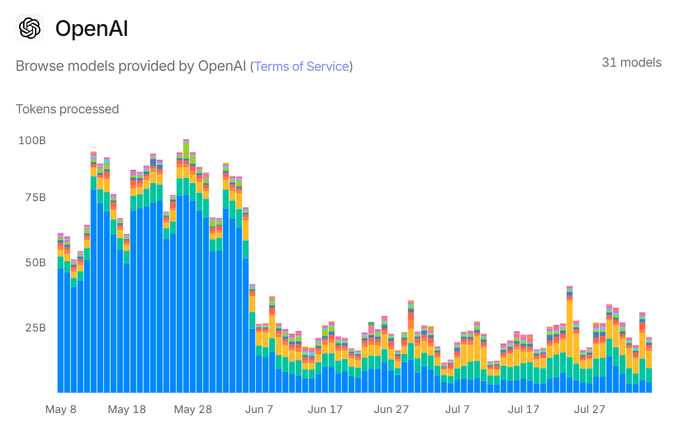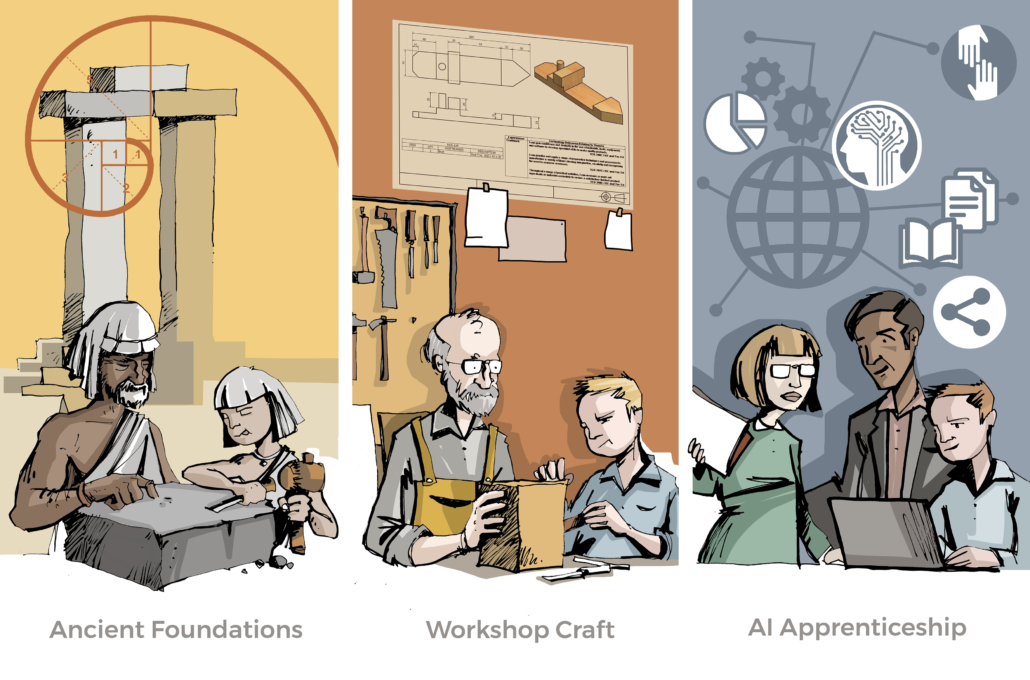
Why apprenticeship and storytelling are the future of learning in the AI Era

Author: Jovan Kurbalija
The biggest obstacle to the AI transformation isn’t the technology itself. It’s the way we still teach.
This simple chart says it all: the use of ChatGPT among students drops sharply at the end of the academic year.

Why? Because AI has become a tool for finishing essays, assignments, and theses, tasks shaped by outdated academic requirements.
Students are acting rationally: if the system demands endless written essays, they’ll use the best tools available to complete them. Institutions, meanwhile, respond with bans and plagiarism checks. Yet none of this solves the real problem: learning isn’t happening.
AI is forcing us to ask a deeper question: what is the real purpose of learning? Throughout history, education has revolved around two timeless practices: apprenticeship (learning by doing) and storytelling (learning through narrative). These two ancient pedagogical pillars provide the basis for the future of learning in the AI era, as explored in Diplo’s courses and research.
Apprenticeship

Human beings have always learned best through practice and guidance, and AI is no exception. Understanding how neural networks or large language models work cannot come from textbooks alone; it emerges through experimenting, testing, and building.
Here, AI presents a new pedagogical challenge. Unlike the deterministic disciplines of traditional science and engineering, rooted in Cartesian logic and certainty, AI is fundamentally probabilistic. This makes apprenticeship-style learning far more effective for grasping its nature.
Think of it like cooking, another probabilistic craft. A recipe only comes alive when you step into the kitchen, work with ingredients, and learn from someone more experienced, whether that’s your mum or a Michelin-star chef. AI apprenticeship works in the same way.
By building chatbots or experimenting with AI agents, students gain genuine hands-on expertise. In the process, they also discover AI’s practical value: personalising learning paths, enhancing creativity, and freeing human brainpower for what matters most—critical thinking and problem-solving.
Storytelling
Writing essays, at its best, is part of humanity’s oldest learning tradition: telling stories. Around fires, through myths, or in philosophy, stories have always given structure to our knowledge. Sadly, in modern academia, this tradition has been reduced, often, to a formality, a way to collect credits rather than explore ideas. No wonder students turn to AI to get the job done.
Facing this problem, at Diplo, we have been working to bring storytelling back to life in education. One method is hypertext annotation, where students follow a narrative in online courses but enrich it with comments, questions, and references. This keeps the flow of storytelling while opening space for dialogue and critical thinking.
We’re also testing personalised learning powered by AI, where each student’s materials, timing, and style are adapted to their needs. In many ways, this gives students something once reserved only for the wealthy: one-on-one mentoring.
What’s Next
On 15 September, we’ll launch our first autumn AI Apprenticeship Programme, with more sessions planned later in the season. Apprentices and mentors will share their experiences, insights, and challenges, helping shape a new model of learning.
We’ll also continue experimenting with storytelling in the AI era, exploring hypertext, personalisation, and multimedia.
The future of learning may look high-tech, but in truth, it takes us back to the very origins of education: apprenticeship and storytelling.
That’s where real learning begins!
Click to show page navigation!


